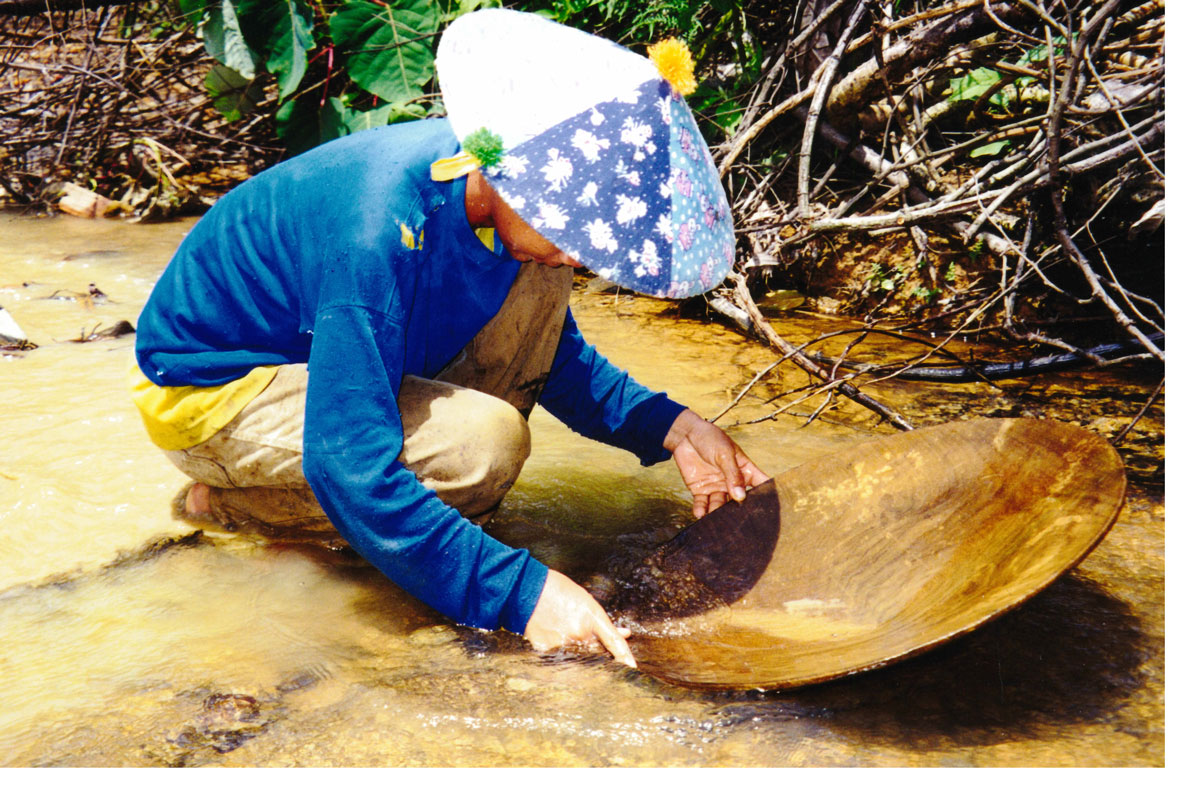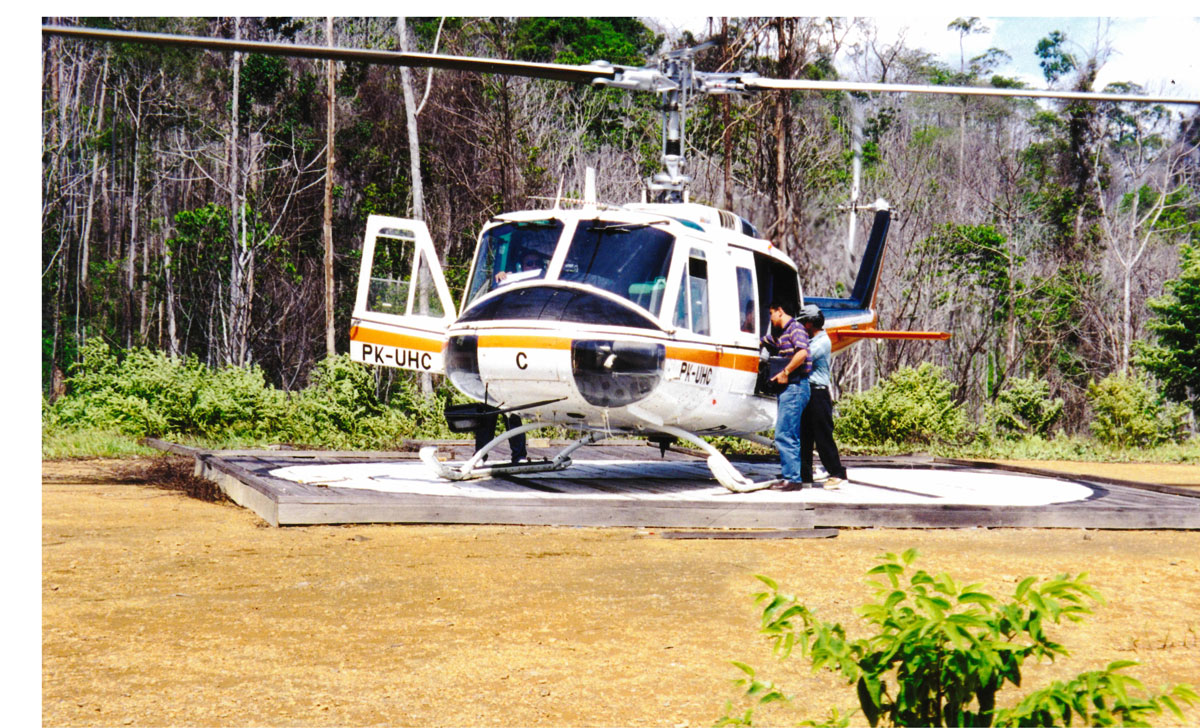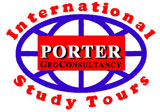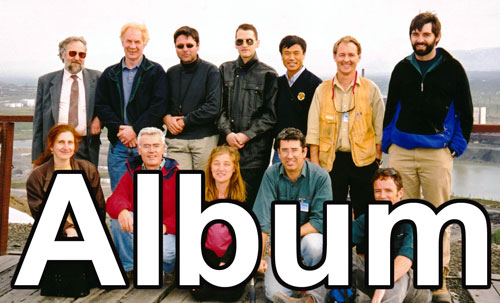| |||||||||||
|
A Tour to Order - Organised by Porter GeoConsultancy EpiGold '98 Evaluation of Epithermal Gold Deposits in the Tropics 29 Oct - 6 Nov 1998 | |||||||||||
|
| |||||||||||

A special 'Tour to Order' was arranged on request and run for two major North American legal partnerships involved in the Bre-X fraud related litigation.
In October 1995, Bre-X Minerals Ltd., a Canadian junior gold explorer, announced a significant gold discovery at Busang, East Kalimantan, in Indonesia, resulting in a rapid increase in the value of its shares. By 1997, Busang's gold resource was estimated for Bre-X by a reputable independent consulting company, to total ~2200 t of contained gold in an epithermal deposit, further inflating the company's share price. This estimate was based on Bre-X drilling and assay data. However, after several companies unsuccessfully attempted to acquire Bre-X, the situation came to a head when the Indonesian Government ruled that Bre-X was too small to develop an operation of this magnitude, and that it should take on a major partner. A deal was negotiated whereby Bre-X would retain a 45% share, and Freeport-McMoRan Copper and Gold would assume the responsibility as major shareholder and operator. The deal was announced on February 17, 1997 and Freeport-McMoRan began their initial due diligence evaluation of the site. It was soon discovered that twinned drill holes did not dupicate Bre-X's assay results and that the original samples had been salted with alluvial gold acquired from artisanal miners operating in the immediate area (as in the image above). The drill core had been destructively sampled (i.e., the whole core crushed, with only short, sparse 10 cm intervals retained). A number of the key players for Bre-X vanished at about this time, some under mysterious circumstances, and rumours abounded as to their demise or escape and sanctuary. Before being purchased by Bre-X in March 1993, the original Busang prospect (Busang Central Zone) had been shown to have an inferred resource of more than 10 tonnes of gold, and weathered bedrock faces in trenches in that resource can be crumbled and abundant gold panned from them, as was demonstrated during the tour visit. This resource lies at the NNW extremity of an extensive zone with a strike length of >4 km and widths of hundreds of metres, that is intensely zonally altered with a core silicic (quartz, sericite ±pyrite ±adularia ±calcite) zone, in an inner phyllic (sericite, quartz, calcite, pyrite) to outer propylitic (chlorite, quartz, calcite ±epidote) assemblage, with associated strongly disseminated and stockwork sulphides. This alteration and mineralisation is hosted in calc-alkaline porphyritic subvolcanic diorites, typical of the Kalimantan Gold Belt hosting deposits such as Kelian. Early hydrothermal quartz-sulphide (pyrite, chalcopyrite, Cu-sulphosalts) stockwork veinlets at Busang are associated with the pervasive phyllic and propylitic alteration, overprinted by crudely banded quartz-carbonate-sulphide/sulphosalts including pyrite, sphalerite, chalcopyrite, galena, tennantite-tetrahedrite, bournonite-seligmannite veins. NOTE, the detail above is from Slater et al. (2020), based on a comprehensive suite of samples collected independently in 1997 by Milligan, G.C., then professor emeritus of geology in Nova Scotia, Canada, and is consistent with observations made during the tour visit. The Bre-X sampling had been salted on the basis of the alteration pattern, and to external observers at the time, the possibility that the observable hydrothermal system contained a significant gold resource was plausible. From a geologist's perspective, it is suspected that the salting had been initially aimed at maintaining investment to fund continued drilling until the "inevitable" discovery. However, this got out of hand, and circumstances overcame the scheme before the hoped for outcome was realised. The Bre-X scandal was one of the drivers of the development of the NI 43-101 reporting standards in Canada. 
The tour comprised two days of workshops presented in Adelaide by experts from around Australia to provide an overview of the occurrence, geology, exploration, evaluation, mining and processing of this important style of gold deposits. This was followed by seven days in Indonesia visiting the Busang Prospect (image to the right) and sample residues stored in Samarinda, both in Kalimantan, and then the contemporary, and technically well managed Toka Tindung Gold Project in Sulawesi for comparison of procedures and standards. These were followed by briefings from laboratories, legal, political and other technical and industry experts in Jakarta. The focus of the tour was on the application and recognition of world's best practices in gold exploration, sampling, assaying and reporting - for non-technical professionals. | |||||||||||
| |||||||||||
|
| |||||||||||












